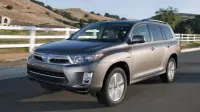Study ranks most efficient powertrains, lowest energy consumption chassis * UPDATE

During the 2011 SAE World Congress, Clark Hochgraf – associate professor of electrical, computer and telecom engineering at the Rochester Institute of Technology – presented a study that examined the powertrain and braking efficiency (PABE) and vehicle limited fuel consumption (VLFC) of light-duty automobiles. The study ranked the most efficient powertrains and the lowest energy consumption chassis based on these criteria outlined by Green Car Congress:
- VLFC represents the minimum amount of fuel a vehicle consumes to complete a given drive cycle; in computing VLFC, the powertrain is assumed to have 100 percent efficiency and the braking system is considered lossless.
- PABE characterizes the powertrain for the effect of powertrain energy conversion efficiency and for regenerative braking efficiency. The powertrain and braking efficiency metric characterizes the powertrain system, for both forward propulsion characteristics and for braking characteristics. PABE is affected by hybridization, by engine efficiency, by accessory loads (i.e. air conditioning and lighting) and by powertrain operating strategies including non-hybrid strategies.
The study concluded that the lowest energy consumption chassis of 2010 model year vehicles – computed using the VLFC method – were the Toyota Prius, Suzuki SX4, Toyota Yaris, Honda Civic Hybrid and the Kia Rio.
The most efficient powertrains on the
city and
*UPDATE: Clark Hochgraf has provided clarification regarding the vehicles with the most efficient powertrains. As it turns out, the most efficient powertrains on the city driving cycle – computed using PABE – were the Toyota Highlander Hybrid, Mercury Milan, Mercury Mariner Hybrid and the Ford Escape Hybrid. Hit the jump for Hochgraf’s detailed explanation of why hybrid vehicles dominant the city cycle list.
[Source: Green Car Congress]
In the city cycle, all the top ten powertrains are hybrids. However, that is not the case for the highway, and this makes sense. Part of the reason the hybrid powertrains are more efficient in the city is they can recover substantial braking energy. On the highway cycle, there is very little braking energy to recover. Instead on the highway, a well built manual transmission, or automatic transmission with lockup may couple the engine to the ground more efficiently than the “electric CVT” of a Prius type powertrain.





